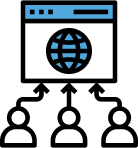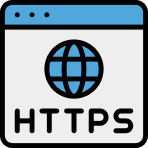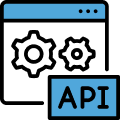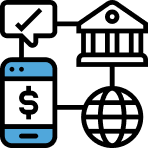Last Updated on June 12, 2025 by ceo_agency
Scrapebox is one of the most powerful SEO tools for harvesting URLs, checking backlinks, and performing bulk operations across websites. However, without a properly configured proxy for Scrapebox, your IP can quickly be blocked or blacklisted. To safely scale your scraping, avoid rate limits, and maintain reliable performance, using proxies for Scrapebox is essential.
Why Use a Proxy Server for Scrapebox?

Scrapebox performs thousands of requests per minute when used for tasks like keyword scraping, search engine harvesting, or link checking. This high volume of activity can result in bans if all requests originate from a single IP. A Scrapebox proxy distributes those requests across multiple IPs, mimicking organic traffic and reducing the risk of detection.
A dedicated proxy server for Scrapebox also helps bypass CAPTCHAs and regional blocks while improving stability across scraping sessions. Whether you’re gathering data for SEO audits or running link-building campaigns, Scrapebox proxy online access ensures uninterrupted workflow.
Types of Proxies for Scrapebox
Choosing the right proxies for Scrapebox depends on your task type and frequency of scraping:
- Mobile proxies – Highly anonymous and ideal for sensitive scraping or bypassing advanced anti-bot systems. They simulate real mobile users and rotate IPs dynamically.
- Residential proxies – These use IPs from real consumer connections, offering better trustworthiness for accessing public search engines and websites.
- Datacenter proxies – Fast and budget-friendly, but more likely to be blocked by platforms with strict bot detection. Suitable for non-critical or short-term scraping tasks.
If your tasks include scraping Google SERPs, checking backlinks, or bulk URL crawling, mobile or residential options are often more stable and sustainable.
How to Choose the Right Proxy for Scrapebox
When selecting a Scrapebox proxy server, evaluate:

- Rotation control – Rotating too frequently can interrupt tasks, while sticky sessions ensure stability.
- IP quality – Always test proxies to confirm they’re not blacklisted or banned. Using a proxy checker helps eliminate faulty IPs before use.
- Latency and speed – Lower ping ensures faster harvesting and smoother processing.
- Compatibility – Ensure the proxy provider supports HTTP and SOCKS5, which Scrapebox requires.
Reliable vendors will clearly list pricing, support integration with automation tools, and offer flexible configuration for different scraping setups.
Best Practices for Using Scrapebox Proxy Online
To get the most from your proxy for Scrapebox, follow these guidelines:
- Distribute tasks across multiple IPs – Avoid sending all queries through one proxy.
- Use verified IPs only – Bad IPs lead to failed requests and wasted time.
- Avoid public/free proxies – These are often overused and already blocked by target platforms.
- Limit request rates – Even with proxies, throttling your speed can help maintain long-term access.
These practices are also applicable when running other scraping tools or automation platforms. For example, those using a proxy for search engines or proxy for marketing research must follow similar principles to avoid detection and data loss.
Why Choose LTESocks for Scrapebox Proxies
LTESocks provides high-quality, flexible proxies for Scrapebox, built specifically for scalable scraping and SEO automation. Whether you’re managing multiple campaigns or running 24/7 tasks, our infrastructure supports stable, clean IPs with fast response times.
Our platform includes tools like a built-in proxy checker, session management, and support for integration with tools like Scrapebox, GSA, and others. If you need more control over your sessions, we also offer SIM hosting and encrypted proxy access via OpenVPN.






























































